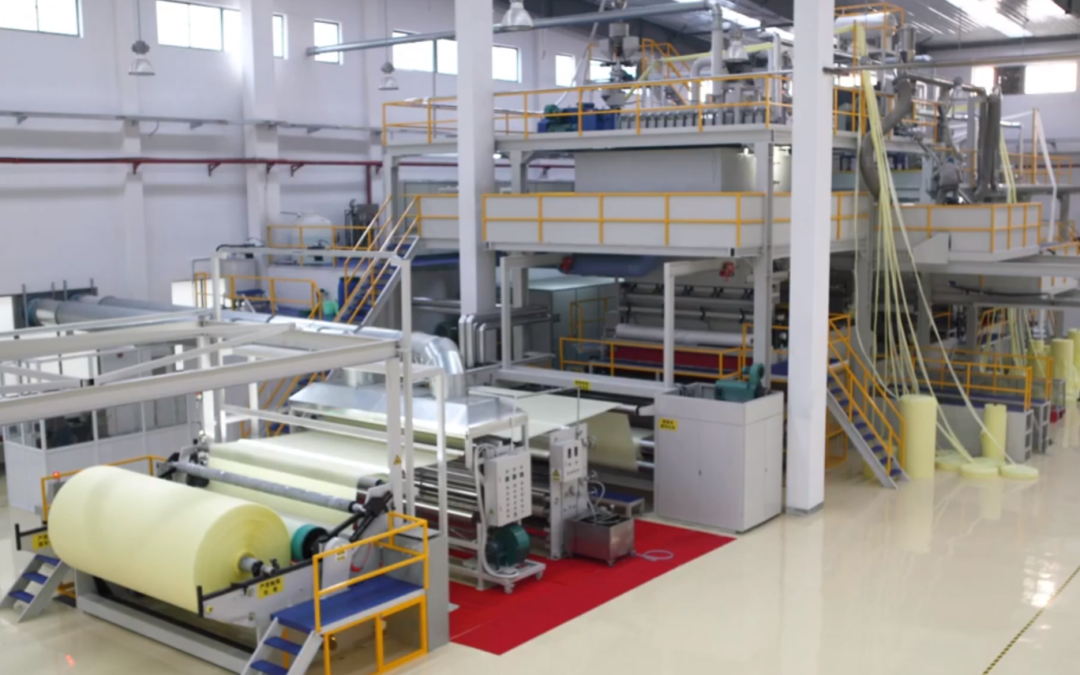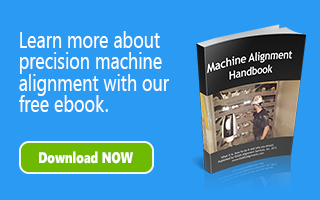Like most web-fed processes, nonwoven lines are susceptible to quality and production issues when components are not precision aligned. From the wet end to the dry end of a nonwoven line, precision machine alignment is a critical factor in producing high-quality product and avoiding scrap and downtime. In this post, we review what causes misalignment in nonwoven lines, the product and equipment problems that can occur due to misalignment, and the benefits of alignment to nonwoven manufacturers. We also provide a real-world use case where precision machine alignment helped a nonwoven manufacturer save time and money through increased efficiency.
Whether your process is melt-blown, spunlaid or spunbond, flashspun, or a combination of nonwoven techniques, the strength and quality of your end product relies on your equipment running at optimum efficiency. When the components within your line are not precision aligned to the standard tolerances for your process or product specifications, costly product and equipment problems can occur.
Product problems:
- Wrinkles
- Web breaks or tears
- Baggy edge/flutter
- Tension issues
- Guiding/tracking issues
- Elevated scrap rates
- Reduced trim width
Equipment problems:
- Bearing and coupling wear and failures
- Increased or uneven wear of rolls and roll covers
- Unusual or excessive vibration
- Guiding issues – excessive “hunting
- Increased energy consumption
The causes of misalignment are similar in most manufacturing facilities and the nonwoven industry is as susceptible as the rest. Improper alignment at initial installation of your line, equipment modifications and rebuilds, breakdowns and emergency repairs, regular maintenance procedures, building settling, and overall wear and corrosion – all can contribute to misalignment of your line. Including alignment inspections as part of your preventive maintenance plan can go a long way towards helping to avoid catastrophic and expensive problems down the road. Additionally, the data from regular equipment alignment surveys can help you design an alignment program that will help you maintain alignment over longer periods of time.
The benefits of precision alignment are many. Reducing or even eliminating many of the product and equipment problems results in less unplanned downtime, significant waste reduction, and maximum productivity. Precision aligned nonwoven components = highly efficient process line.
Use Case: Precision Alignment Significantly Reduces Waste
A nonwoven manufacturer was seeing a significant increase in waste due to baggy edges and a “soft rewind” in one of their lines. In order to meet end customer satisfaction, they were trimming 7 inches of product – 7 inches! OASIS was called in to perform an alignment inspection of the entire line. Using a Leica AT960 laser tracker, an OASIS metrology engineer quickly gathered alignment data of each section of the machine. Minor misalignment issues were found in the rolls of spunbond and hydroentanglement sections as well as in the dewatering section, the cylinder dryers and the reel and rewind section. The survey however, did uncover significant areas of misalignment between the lead-in and lead-out rolls relative to the drums of the T.A.D Units (Through-air Dryers). After review of the inspection results, OASIS was asked to provide alignment support of the T.A.D. drums and the rolls of each section. Since the alignment, this facility has seen a vast improvement and has substantially reduced waste.
In a future post, we will discuss alignment methods and technologies for the nonwoven industry. There are a number of alignment tools in the field today, though all are dependent on the experience and training of the technician – whether you use in-house personnel or outsource to a qualified alignment vendor. Please contact us for more information or if you would like a site visit to your facility.

